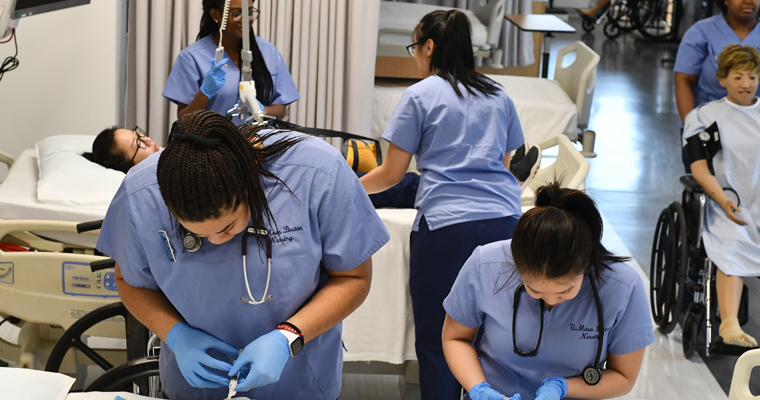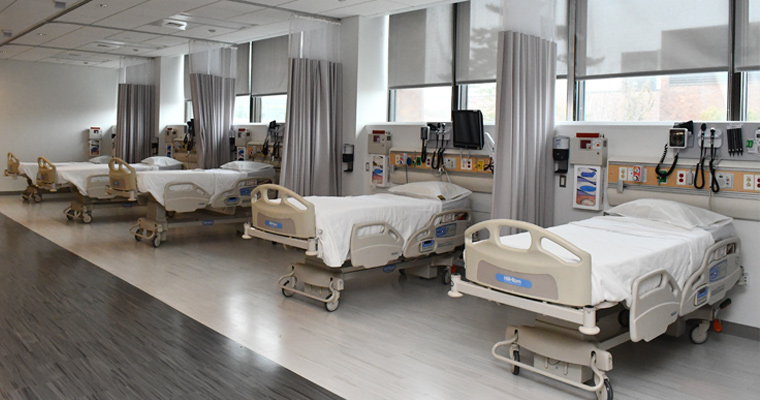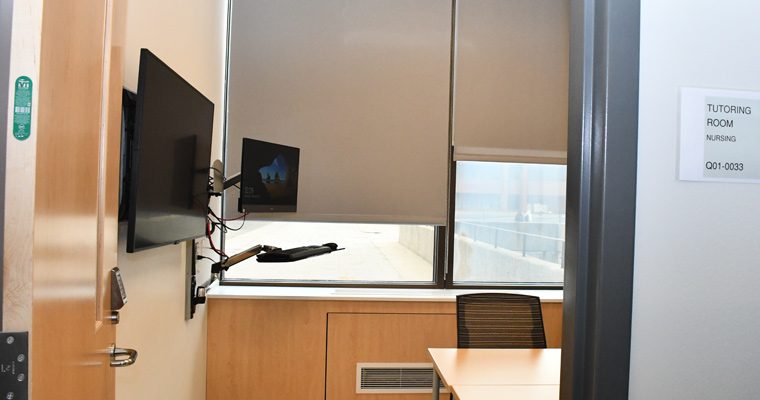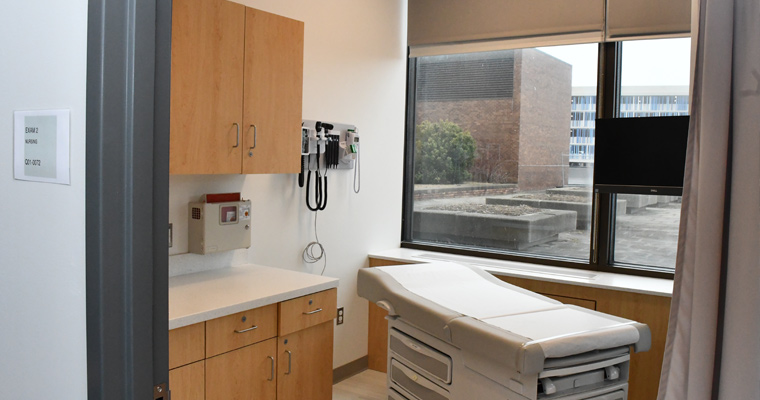Tripled in Size, New Center for Clinical Education and Research Gives UMass Boston Nursing Students Extra Edge
CCER Has Moved from Science Center to Quinn Administration Building

The College of Nursing and Health Sciences’s Center for Clinical Education and Research (CCER) has long given UMass Boston nursing students an advantage as they embark on clinicals and paid nursing jobs. With its move to the first floor of the Quinn Administration Building this semester, the CCER has gone from about 3,000 square feet to just over 10,000, with even more amenities that prepare our students for the workforce.
“The new state-of-the-art space allows us to safely educate students to care for patients,” College of Nursing and Health Sciences Dean Linda Thompson said. “It is truly a game-changer for us.”
“We’ve designed the environment to resemble a hospital environment as accurately as possible,” said UMass Boston alumna and CCER Director Rosemary Samia. “It really mirrors what they see in the clinical setting, and it familiarizes them with some of the equipment.”
Junior nursing student Faith Koroma-Coker gives us a tour of some of the CCER spaces in this video.
Sophomore nursing major Josephine Burlingame is a student nurse at St. Elizabeth’s Medical Center. She says she felt comfortable during her orientation earlier this month because the equipment was what she’d been working with at UMass Boston.
“I recognized so many things. Even if it’s just stuff on the wall, I’m like, ‘Oh, I’ve seen that before.’ Like, ‘I know what that is,’ instead of going and being like, ‘I don’t know any of this,’” Burlingame said.

When the CCER was in the Science Center, the largest room consisted of mannequins in exam beds on two walls surrounding a classroom of desks. Now there are two skills labs, north, pictured above, and south, meaning more simulations can be run at once and there are more opportunities for open labs, where students can practice a skill by themselves or with a graduate teaching assistant for 10 minutes or the full two hours. Samia says during the second week of class, more than 50 students took advantage of the open lab time. And that’s not the only benefit of the larger space.
“When we run simulations, one of the important parts is the debriefing at the end of each scenario. The students are debriefed in a private, confidential setting with a simulation educator, and that space didn’t exist in the old lab,” Samia said. “So now we have three debriefing rooms and our reach is much greater than we ever could dream of in the last place.”
As a junior, nursing student Stevie Conley has experience working in both the old and new CCER.
“The old space was very crammed. For labs, there were 20 of us crammed into one room with all the desks,” Conley said. “Now you can really spread out. … You can really home in on your skills, and learn a lot more. And then there’s a separate classroom for practice questions, reviewing, tutoring, learning a new skill, stuff like that.”

Burlingame is among those who have already taken advantage of the separate tutoring space.
“I have a lot of exams coming up in the next week, and being in big groups, it’s sometimes hard to really focus in on your skills. I made two appointments this week. Just to be one-on-one with the tutor is really helpful,” Burlingame said.

Also new – six outpatient exam rooms and the skills labs are equipped to handle standardized patients, actors portraying patients. Samia is also bringing in people from the Dorchester area to interact with students during their health assessment labs. Students will benefit from interviewing and performing physical assessments on a variety of patients.
“I’m hoping to introduce community members and our students and put them together in a learning environment – help each other understand a different perspective of the health care system,” Samia said.
“I really enjoy the space because you get more of a hospital feel, I think, of a bigger ward. It’s nice that you get windows, you have the sun in, you get to have more space for interaction, and more experiences for learning. Overall, I think it’s going to be a great experience for current and prospective nursing students,” Conley said.
About UMass Boston
The University of Massachusetts Boston is deeply rooted in the city's history, yet poised to address the challenges of the future. Recognized for innovative research, metropolitan Boston’s public university offers its diverse student population both an intimate learning environment and the rich experience of a great American city. UMass Boston’s 10 colleges and graduate schools serve 16,000 students while engaging local and global constituents through academic programs, research centers, and public service. To learn more, visit www.umb.edu.